2013 -2015
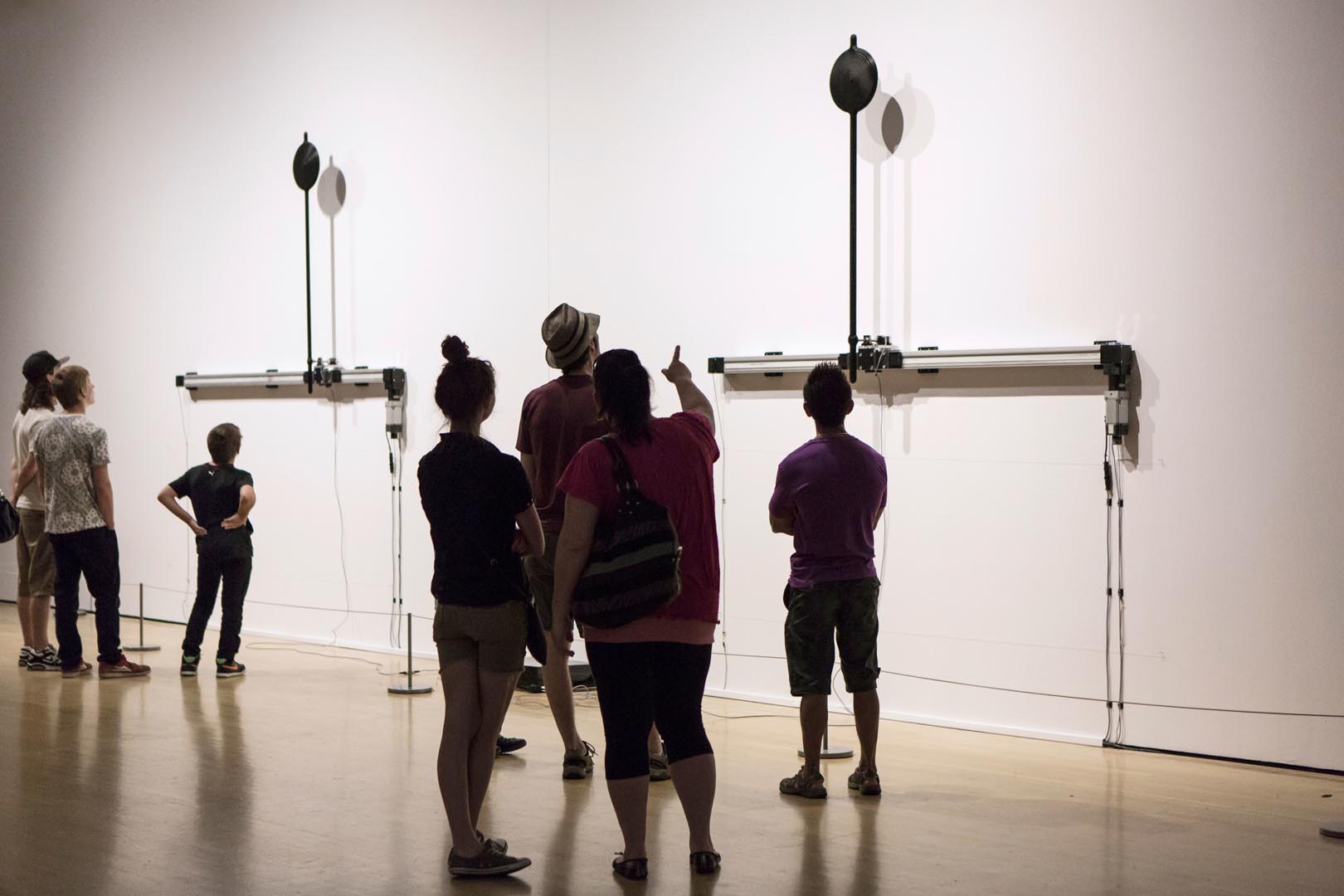
Focusing on the limits between scientific modelization and reality, theory and perception, the installation plays with different meanings of the endlessness.
D.W.I gathers experiments as fictional strategies to generate infinity: The complexity of chaos, the space filling capacity of the rhombic dodecahedron, the replication of motorized mechanical systems as clones, or a machine’s effort to raise a pendulum against gravity.
“The ancient alliance has been destroyed; man knows at last that he is alone in the universe’s indifferent immensity out of which he emerged only by chance”. (Jacques Monod).
Strategy 1: Space/Volume and Geometry
DW.I : Modular
The system is composed of 10 rhombic dodecahedrons, geometrical objects part of the family of «Space-filling polyhedra»: shapes that can be assembled to generate a tessellation of an infinite space. These forms act as the building blocks for a sculpture generator.
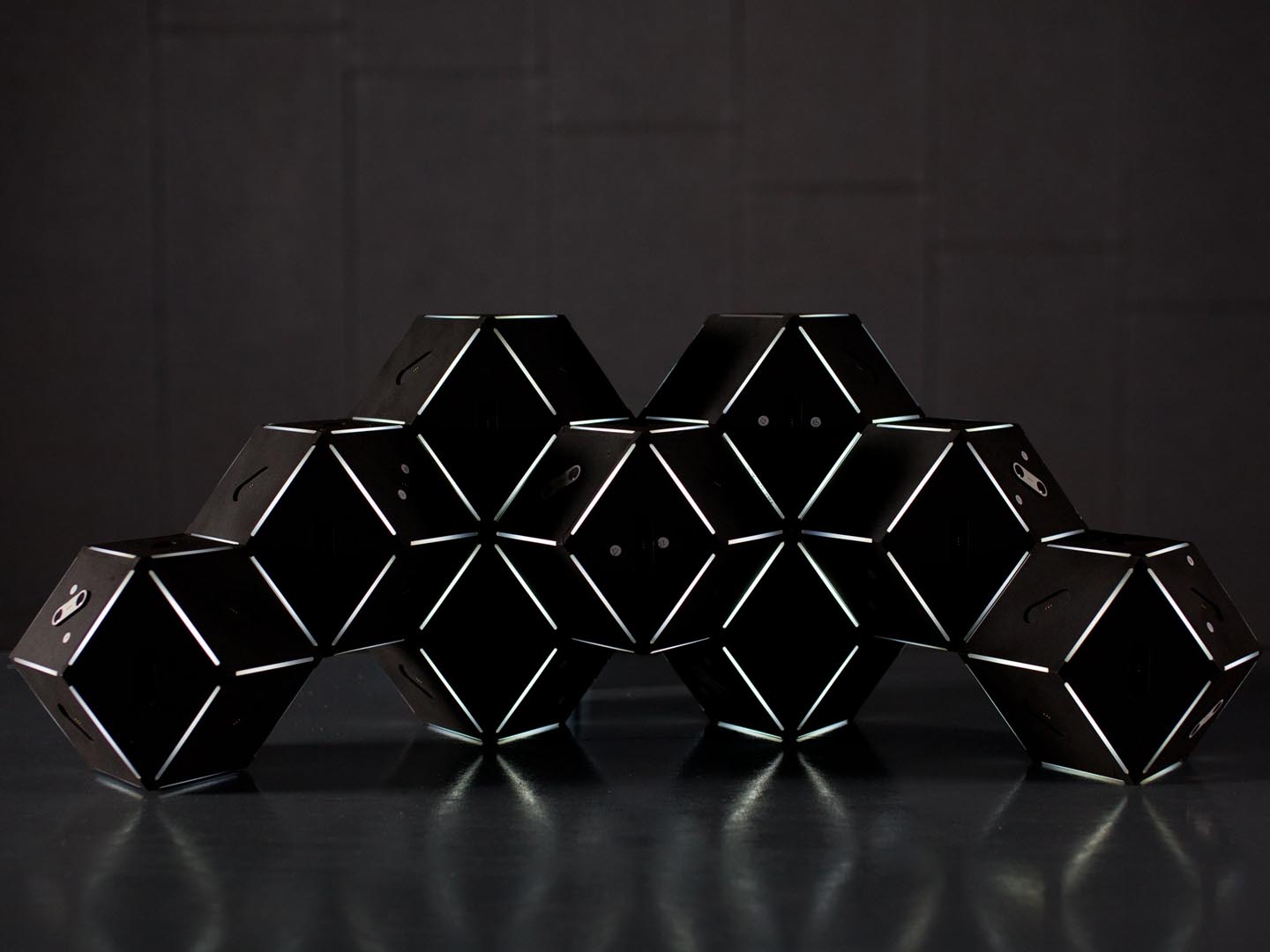
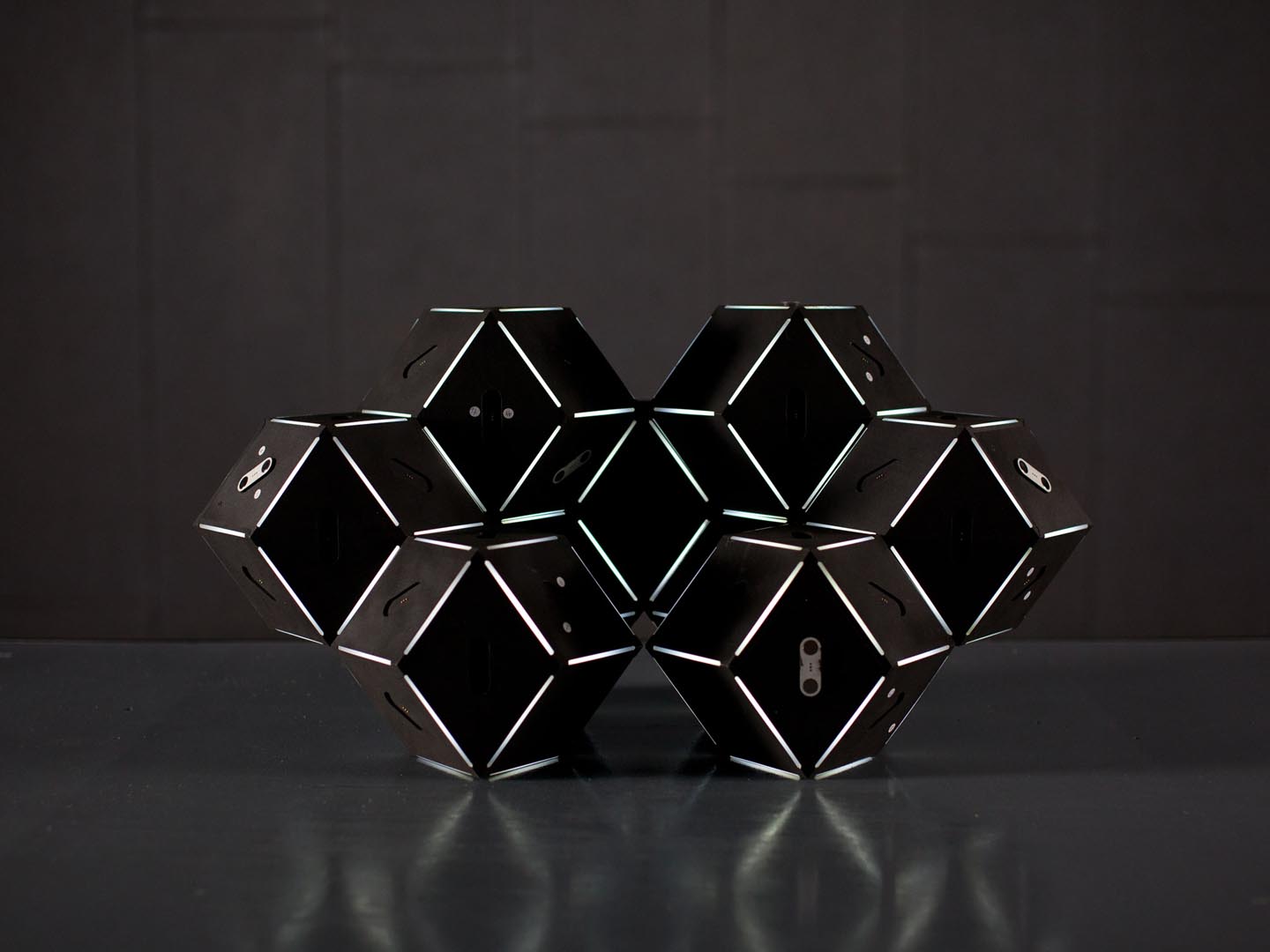
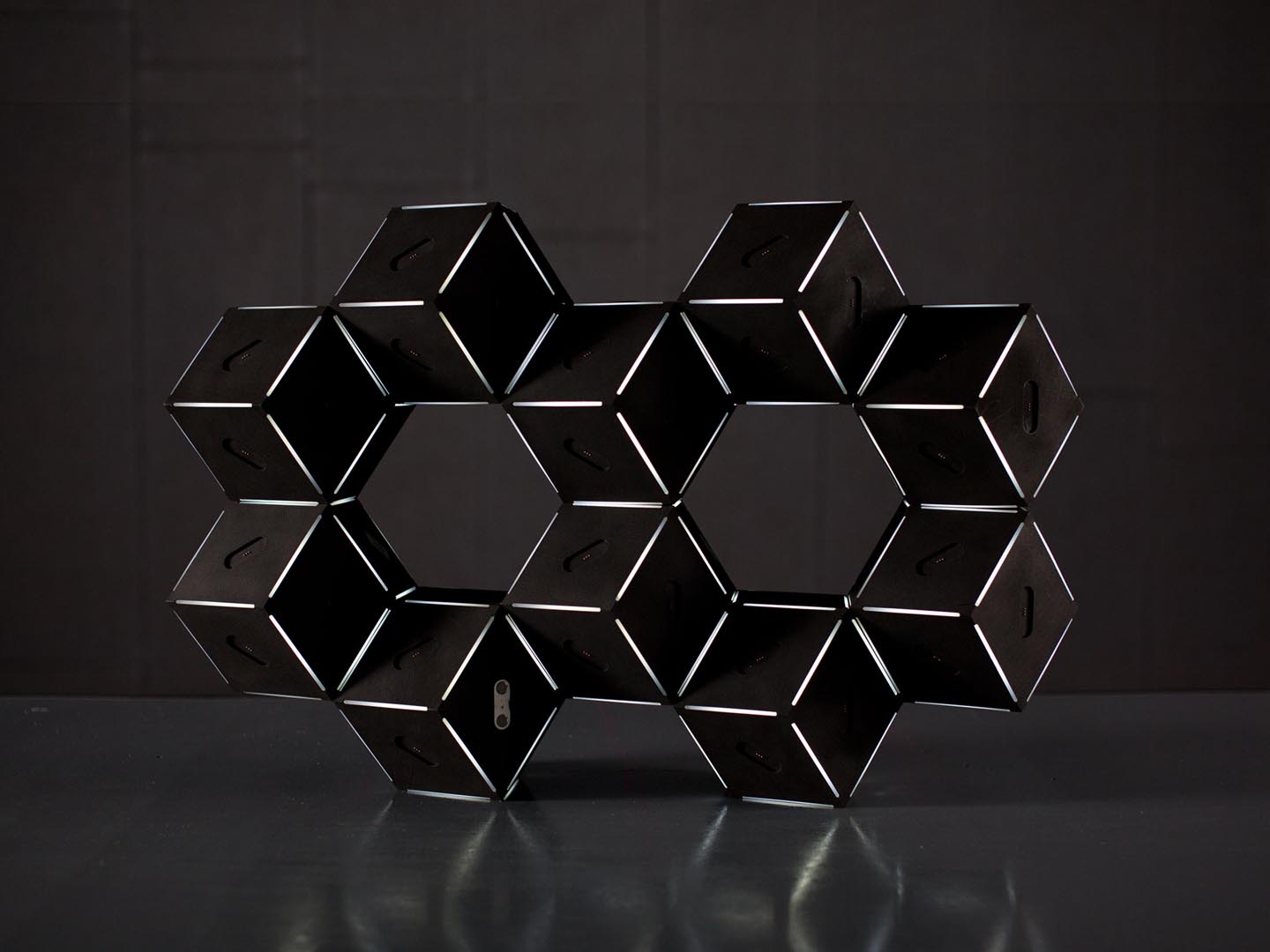
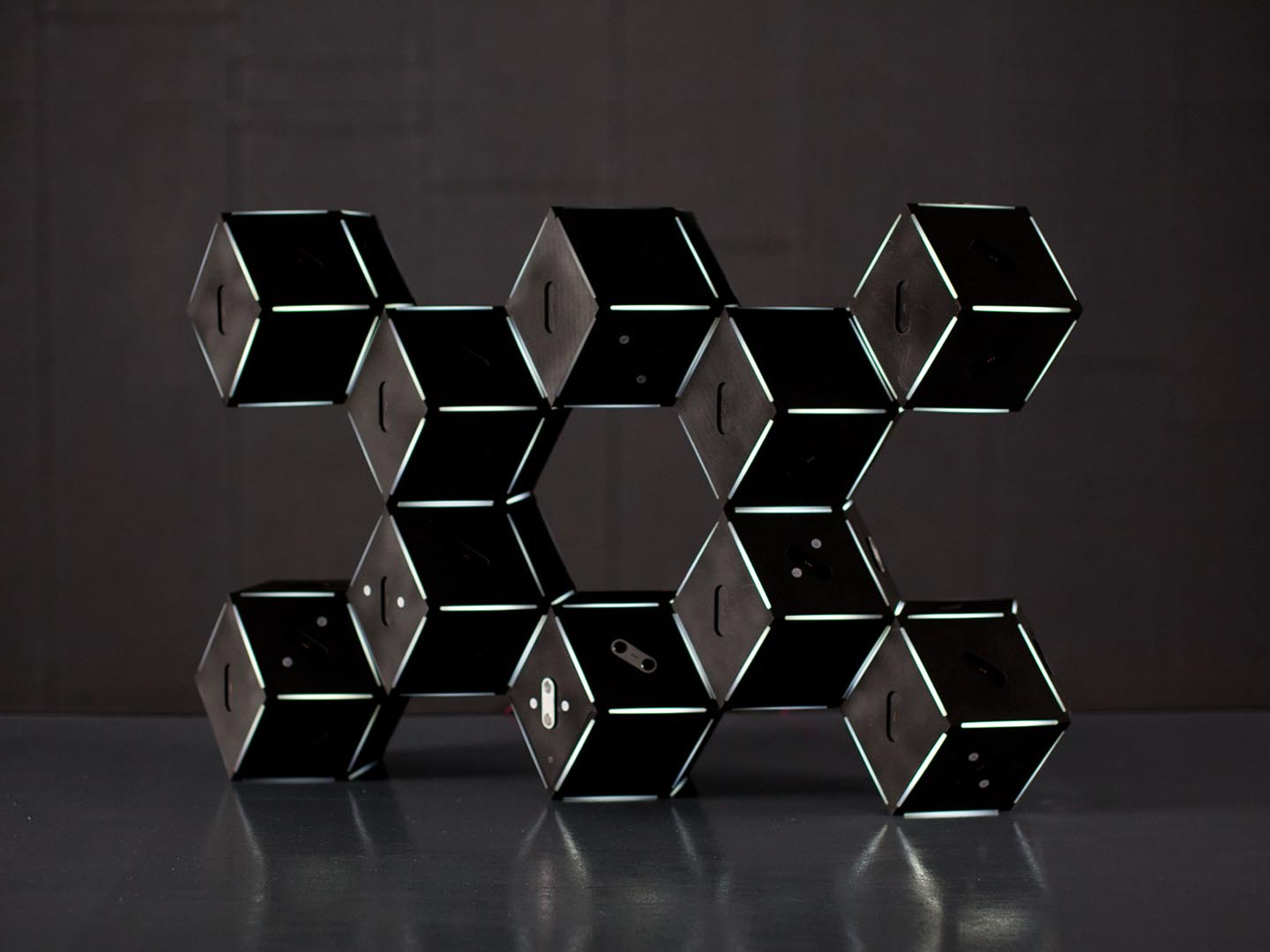
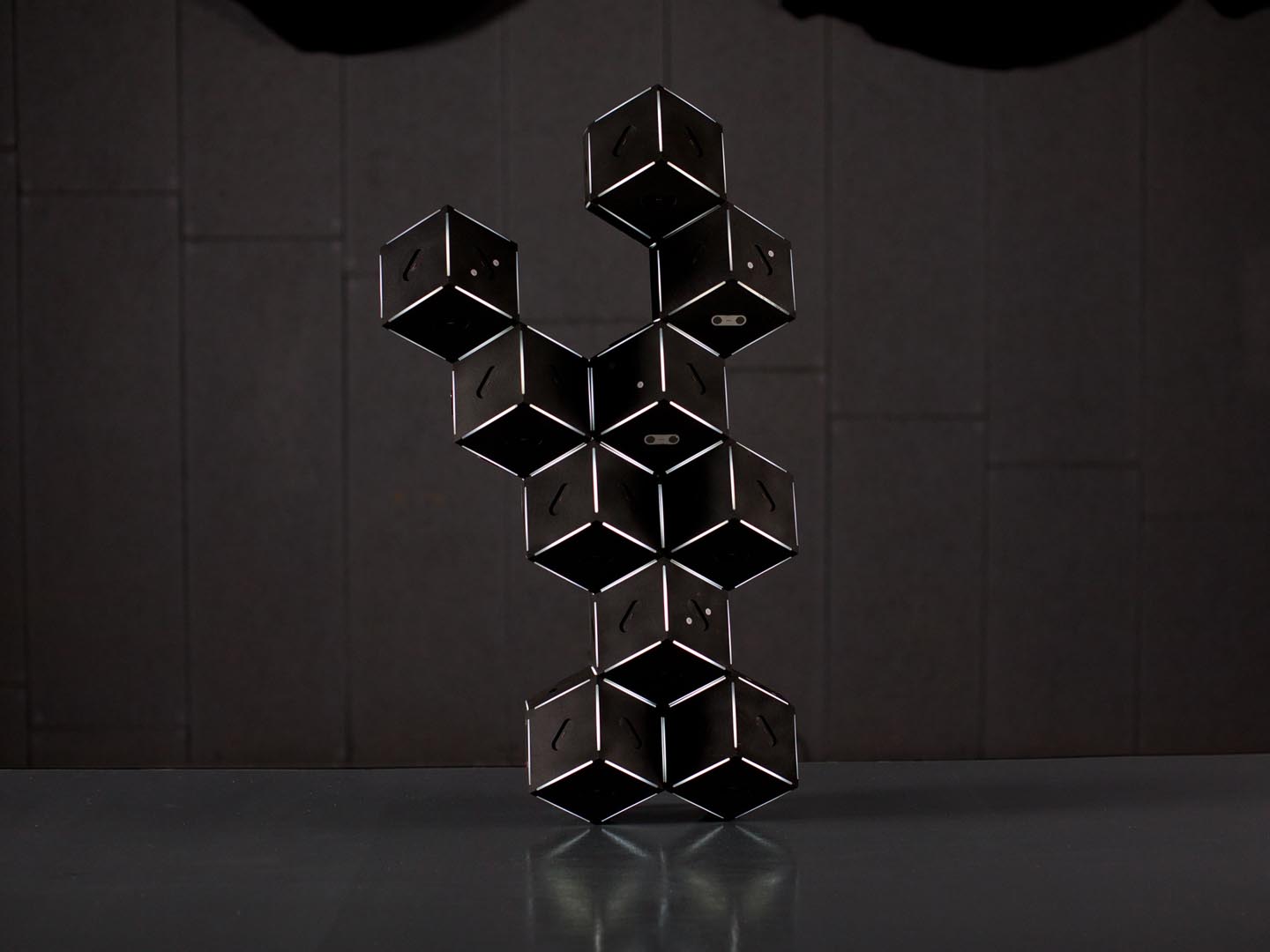
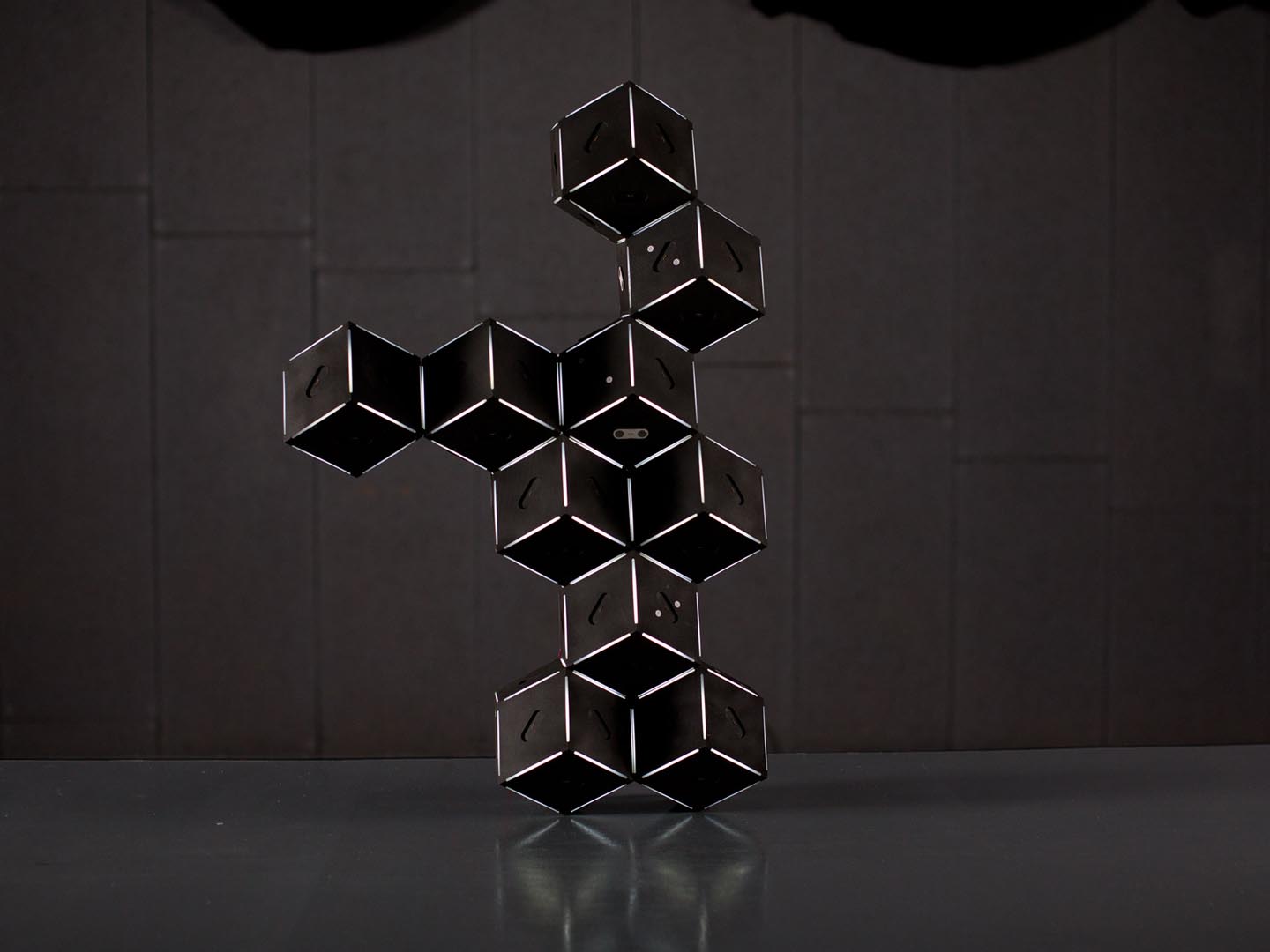

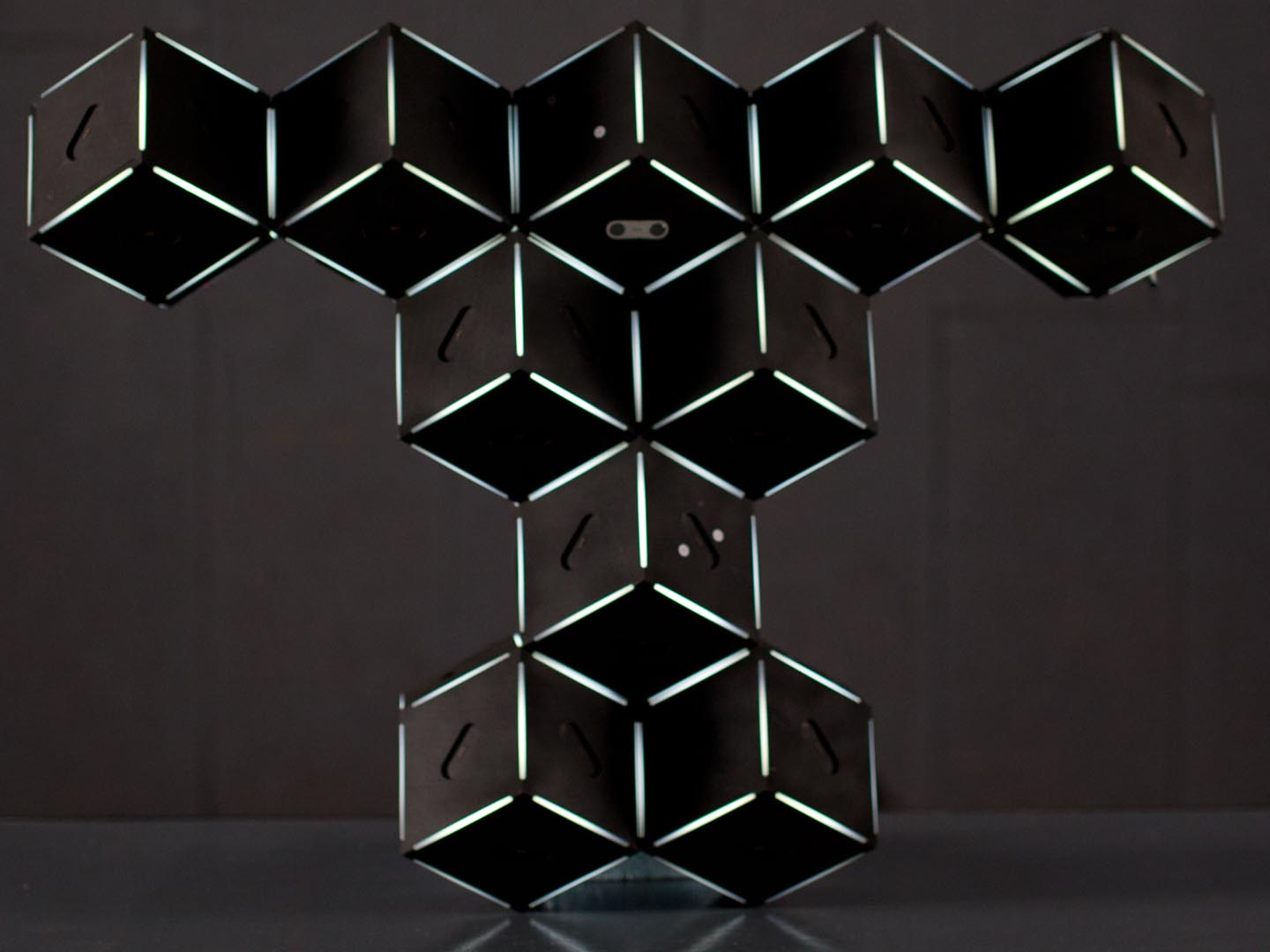
Strategy 2: Complexity / Chaos and equilibrium
Chaos theory challenged, in the late 70’s (La nouvelle alliance 1979) traditional science’s mechanistic vision of the universe. Reality became an open system based in change, disorder and entropy.
Following the Prigoginian paradigm, DWI Chaos and DWI Clones, focuses on those aspects of reality such as disorder, instability, disequilibrium and non-linear relationships. The installation confronts the viewer to the anatomy of nature as an open system: entropy, the metaquantification of complexity, gravity, the control of chaos …
DWI: Chaos
Chaos is shown as physical and electronic phenomena, using Lorentz attractors and fluid dynamics.
The Chua circuit (1983) is the first analogue, electronic, physical scientific demonstration of the existence of Chaos. The artist has implemented different variations of this electronic circuit. By using motorized potentiometers, the self-made synthesiser goes in an infinitive loop coming in and out of chaos.
To visualise these processes, the artist uses analogue oscilloscopes. In their display, we can observe in real-time the generation of bifurcation points, a moment where change is so powerful, that it shatters the pre-existing organization, disintegrating in to Chaos. Lorentz attractors are generated at this point, arising order out of chaos (These are fractals, forms that tend to infinity). A small fluctuation generates new evolution that will drastically change the behaviour of the system, achieving a macroscopic state of disorder and maximum symmetry. The system then fluctuates around the attractor state. The resulting forms evoke natural systems, such as weather.
The 3d animations and prints, also visible in the installation, focus on computational fluid dynamics, which is a contemporary research field influenced by the chaos theory paradigm. The first video illustrates the behaviour of virtual volcanic smoke, which flows in different volumes. In these synthetic images, computation embraces the tangible in an impressive simulation of nature and reality.
In the second video and the prints, the explosion of millions of virtual particles creates complex forms. The resulting image is a fictional sky, a kind of “galaxy” cloudscape, generated by a computational simulation and based on our environment’s physical conditions.
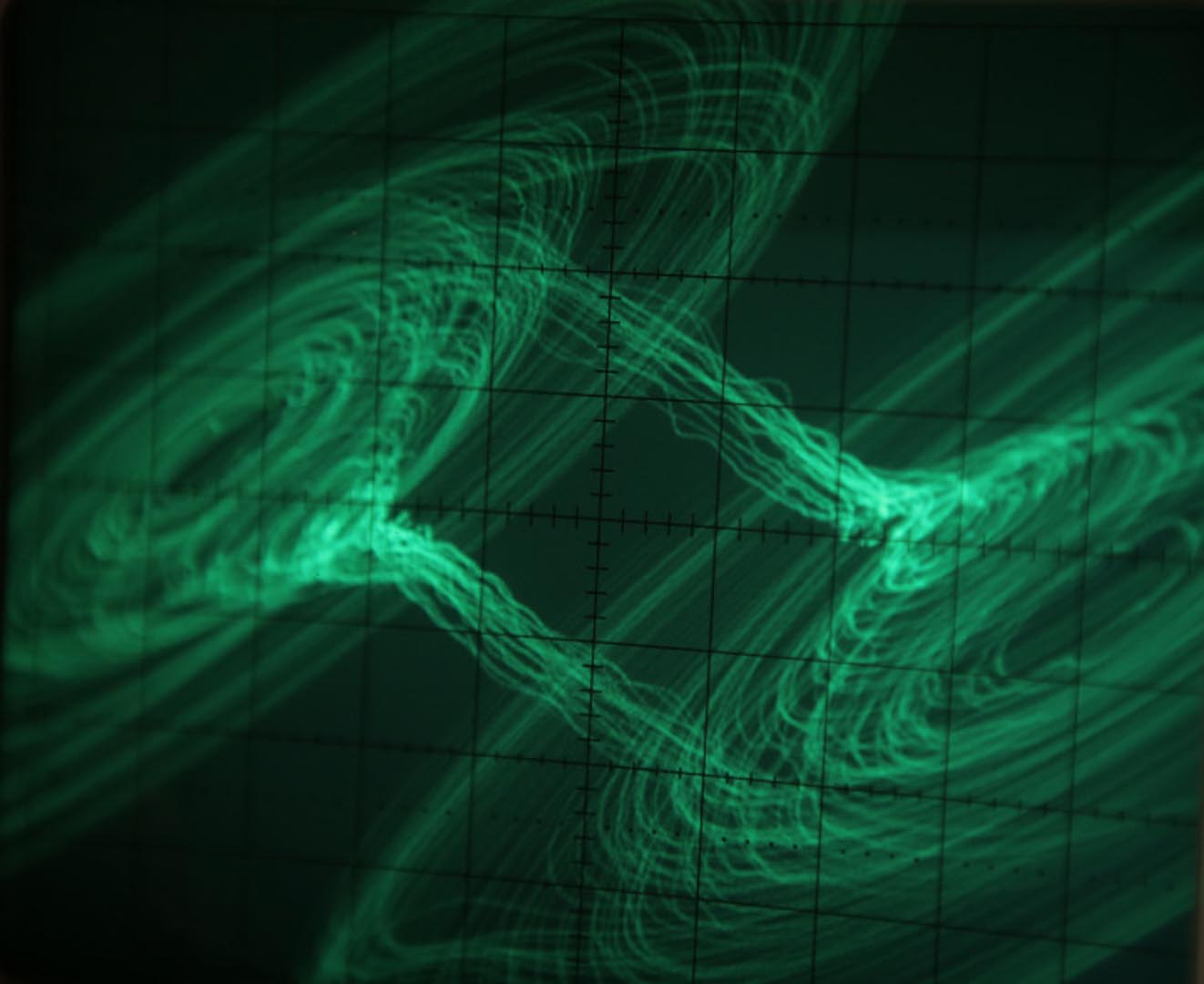


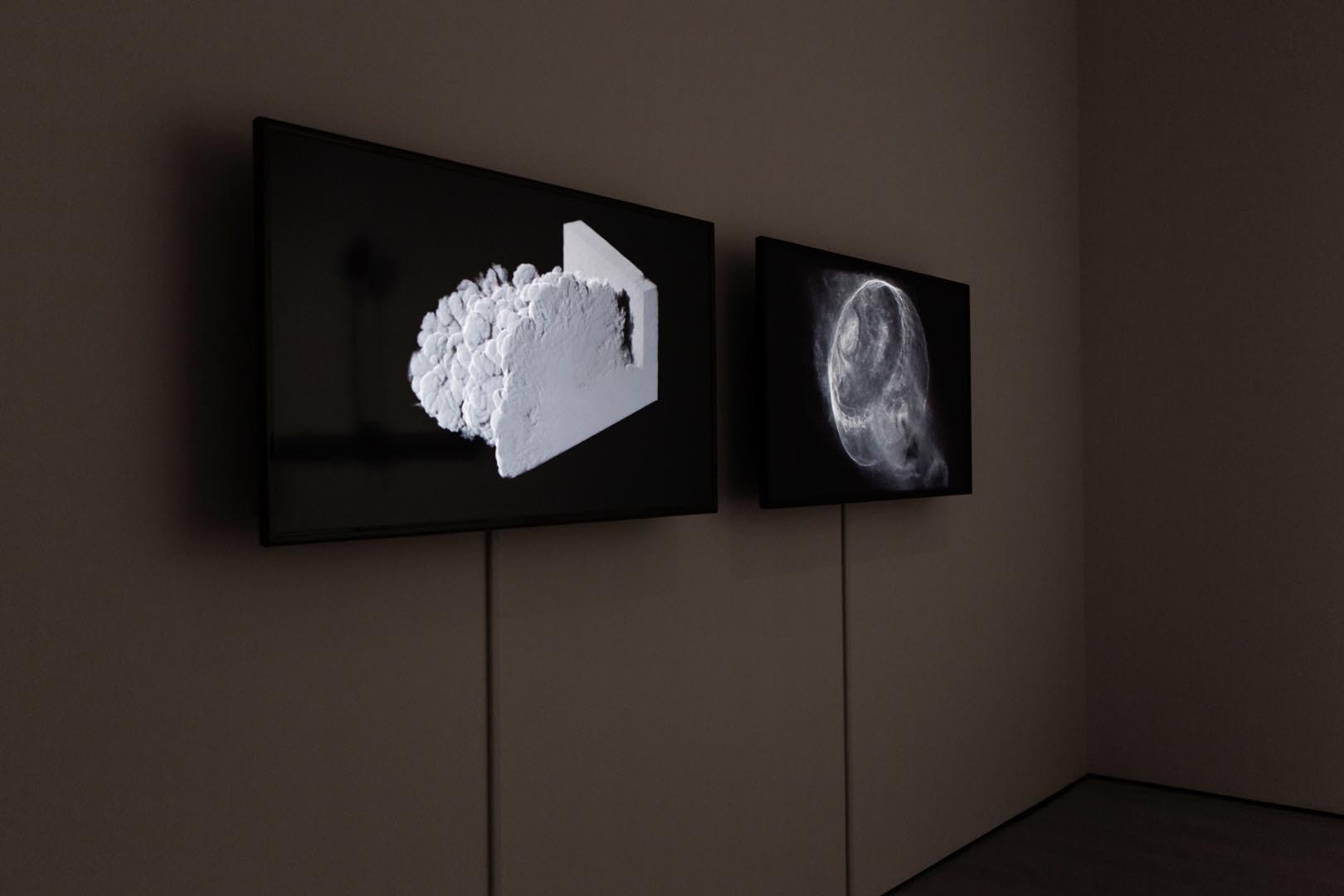



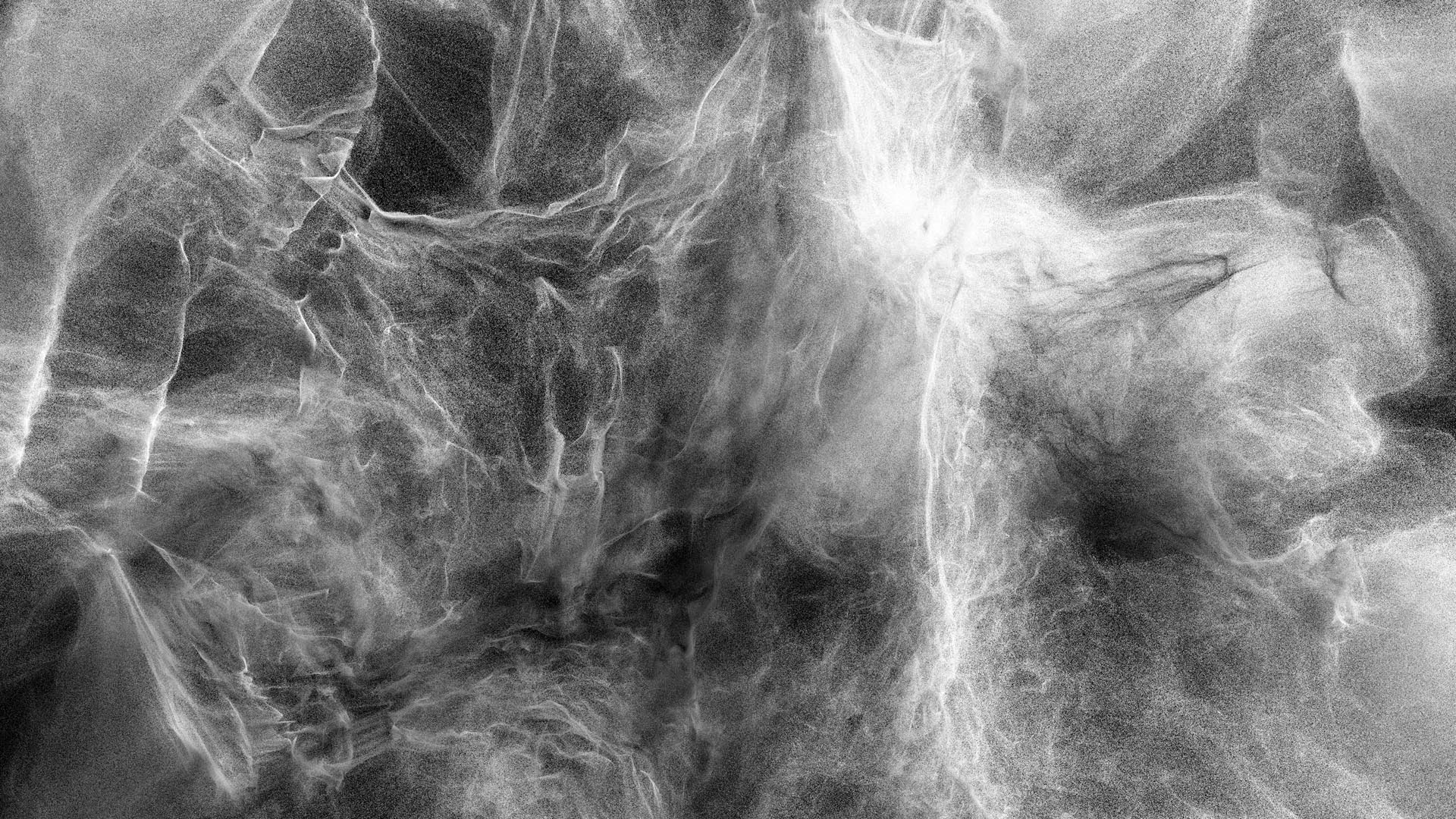


DWI: Clones
Clones are represented as identical mechanical machines (inverted pendulums), that using human behaviors, fuzzy logic, drift to find endlessness equilibrium.
“Clones” uses two identical inverted pendulums: based in a motorized mechanical system, the pendulums are mounted with the pivot point on a cart that moves horizontally. This movement makes the pendulum swing, and once the pendulum rotates to its inverted vertical point, an algorithm takes control of the movement of the cart and tries to find equilibrium against gravity. The artist explores the expressiveness of the system, using human size heavy pendulums, capable of generating enough inertia to generate self-rotation. He also tries to humanize the system in a game of failures and successes.
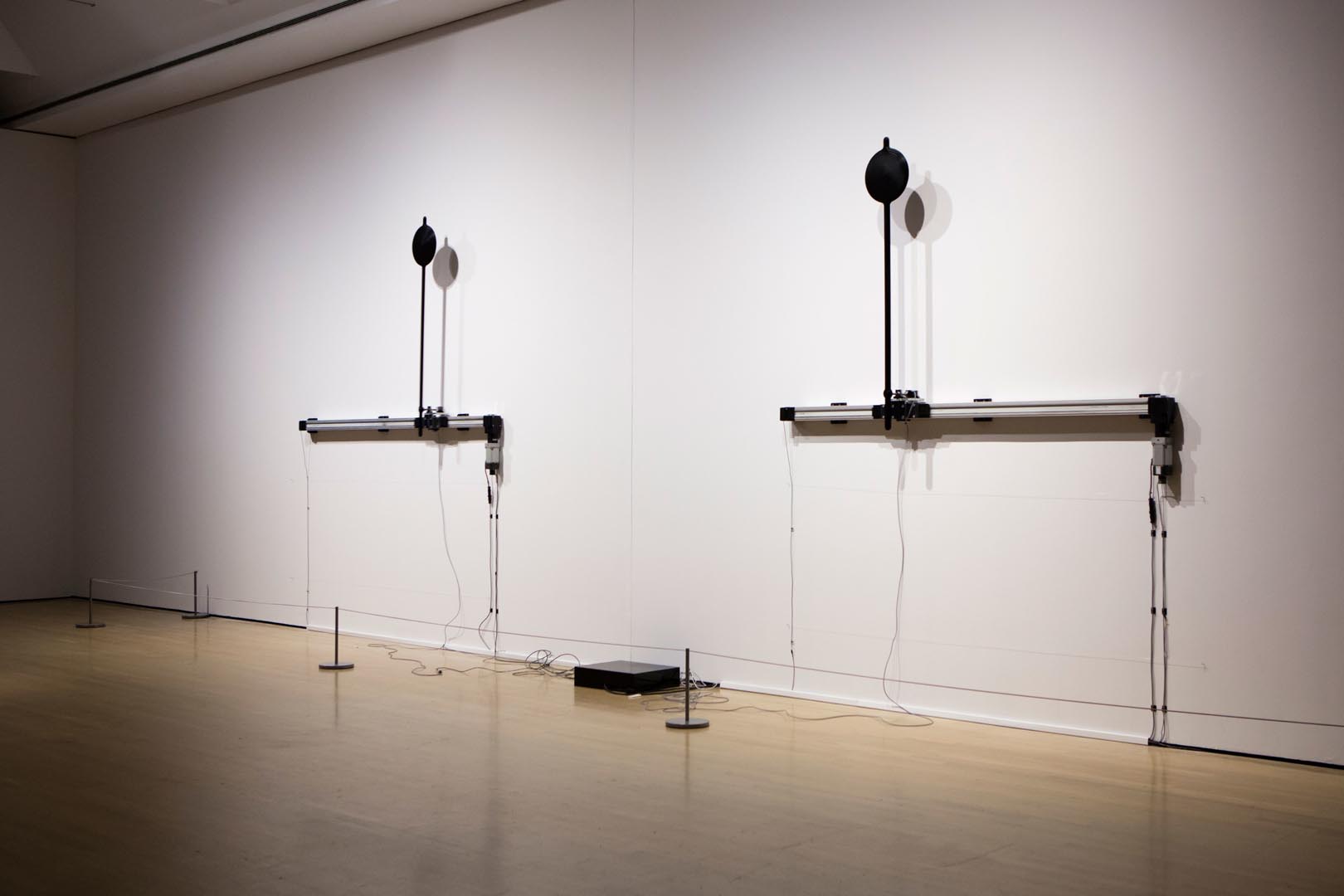
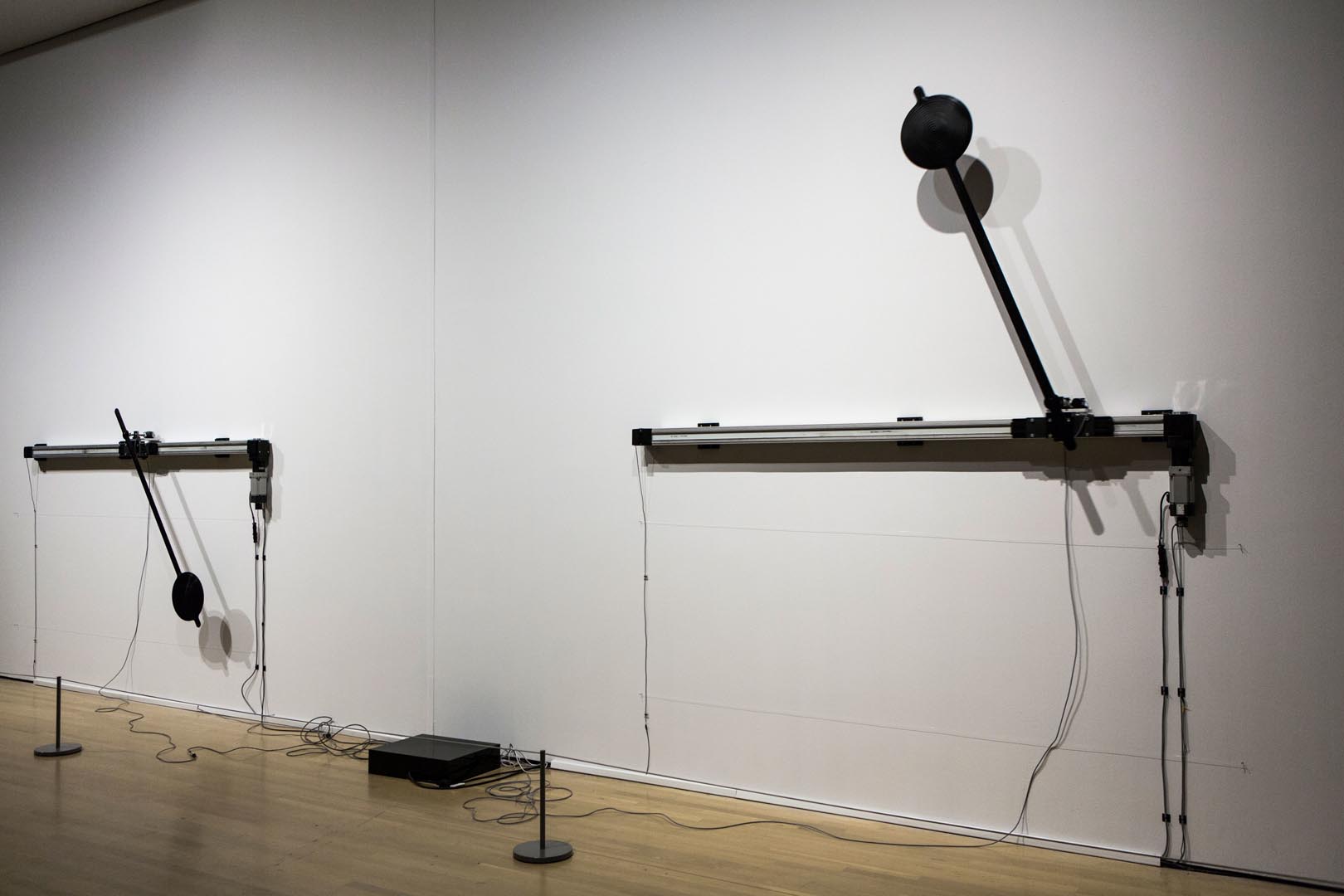

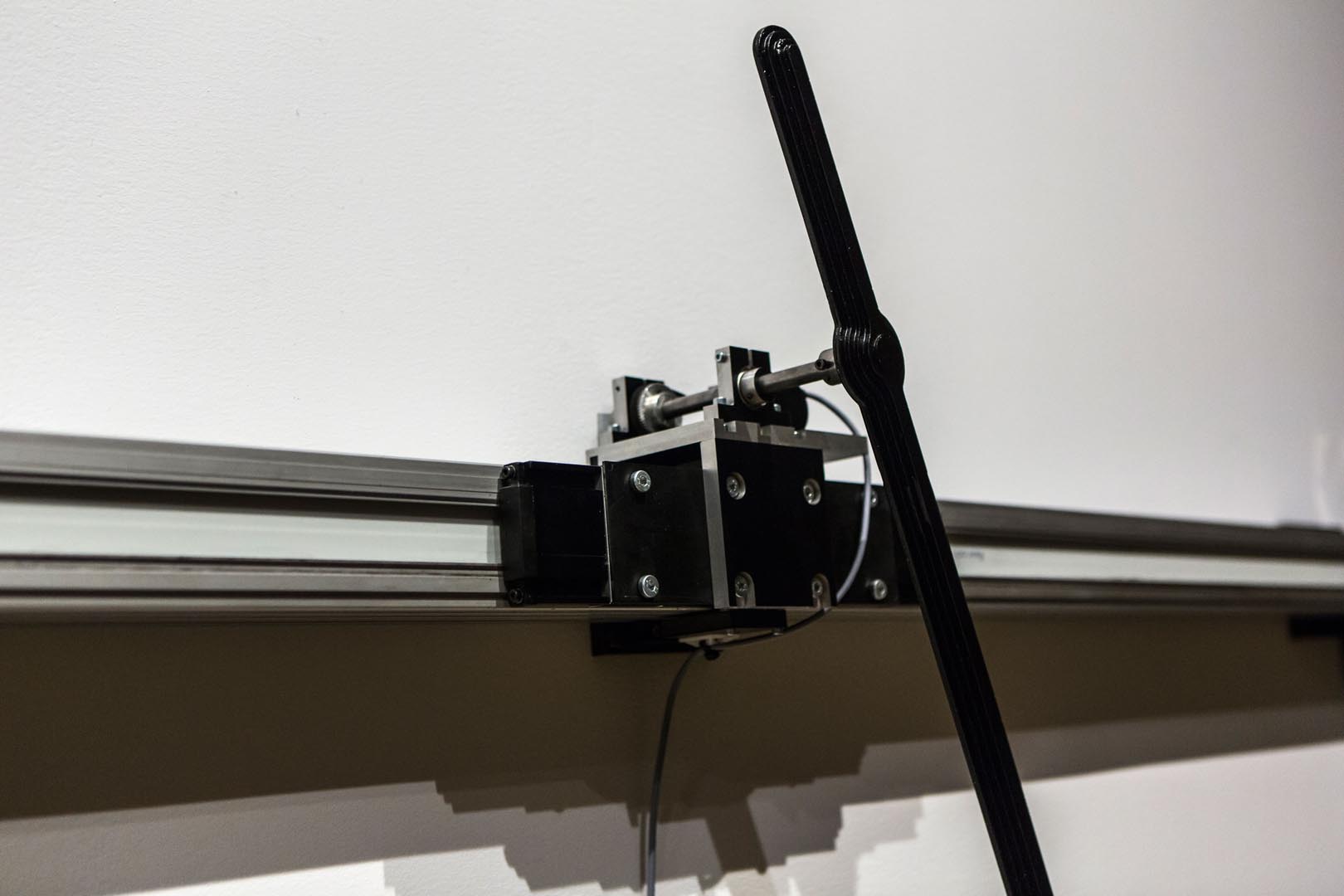
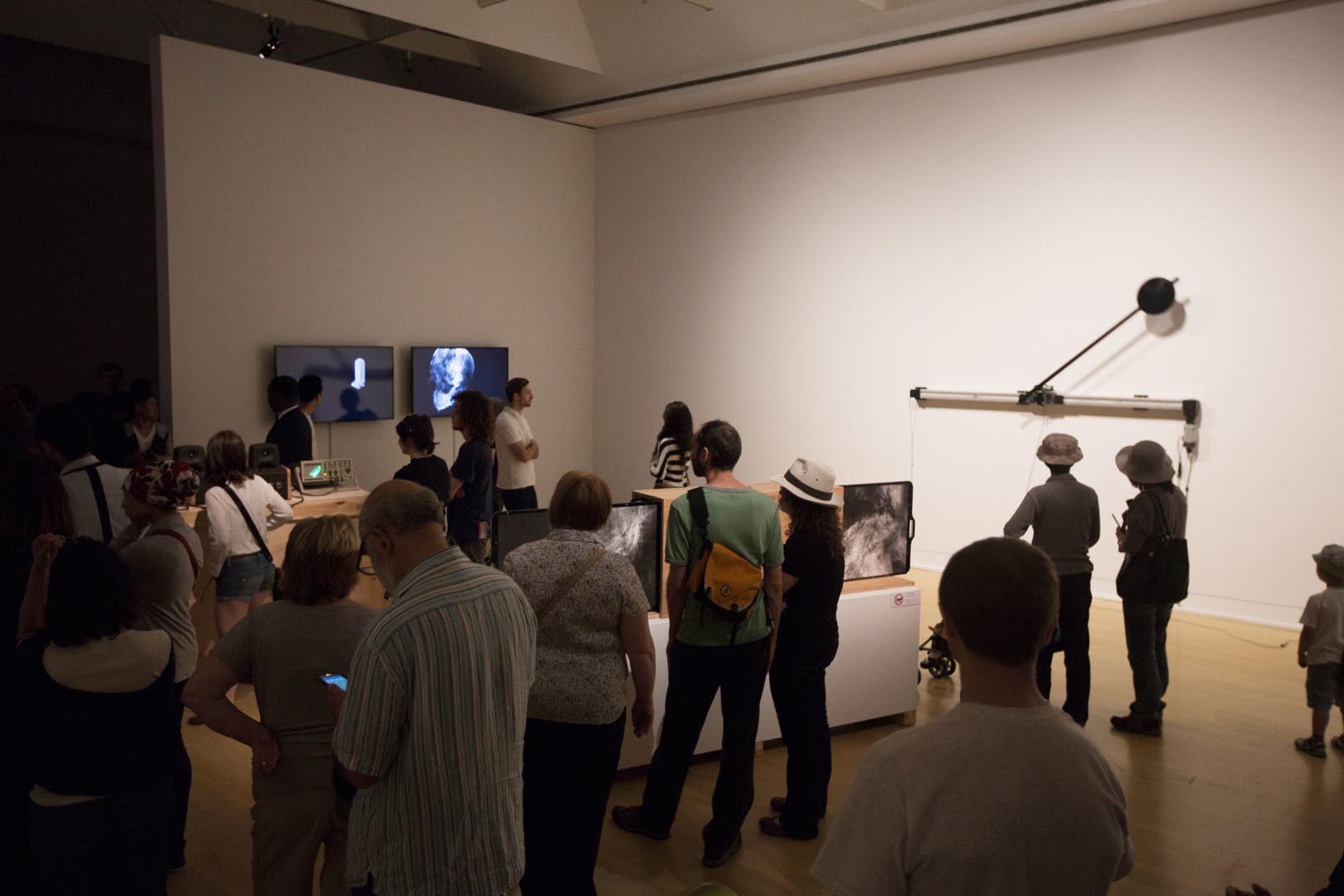
Technical description
10 rhombic dodecahedrons, assembly system based on magnets, steel, polyamide, methacrylate, Arduinos, Xbee, electronic circuits, led lights, ultra sound sensors, speakers. computer.
Digital pigment prints. Diasec mount.
2 videos. HD 1080p. Durations 04:03 & 04:30.
Analogue Synthesizer, leather, Oak, aluminum, electronic circuits, motorized potentiometers, arduino, Oscilloscopes, speakers.
Inverted Pendulums in Epoxy Foaming, Mechanical parts, encoders, controllers, motors.
Keywords
Space-Filling Polyhedra, Rhombic Dodecahedron, Sculpture Generator, 3D Tessellation, MaxMsp, Arduino, 3d prototyping, Laser Sintering, laser cutting and engraving, cnc milling, pcb prototyping, micro lathe, industrial design
Computational Fluid Mechanics, Chaos Theory, 3ds Max, Krakatoa, Realflow
Synthesizer, Chua Circuit, Chaos Theory, Lorentz Attractor, Chaotic attractor, Double Scroll.
Inverted pendulum, Fuzzy logic.
Credits
Different Ways to Infinity by Félix Luque Sánchez
Iñigo Bilbao: 3d graphics, Dodecahedrons Industrial Design .
Damien Gernay: Design of the synthesizer and pendulum.
Vincent Evrard: Arduino programming.
Julien Maire: Mechanical design.
Gridspace: Photos during the BIAN 2014 @ MAC Montreal
A production of "secteur arts numériques, Fédération Wallonie-Bruxelles"
With the support of iMAL (FabLAB)
"Different Ways to Infinity: Modular" received a production award from Fundación Telefónica "vida 13"